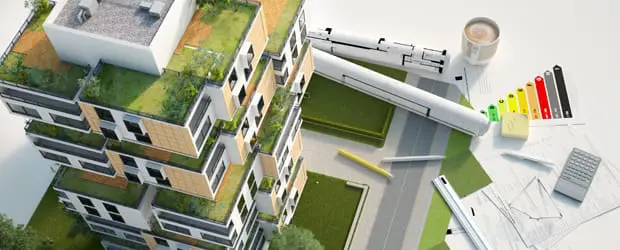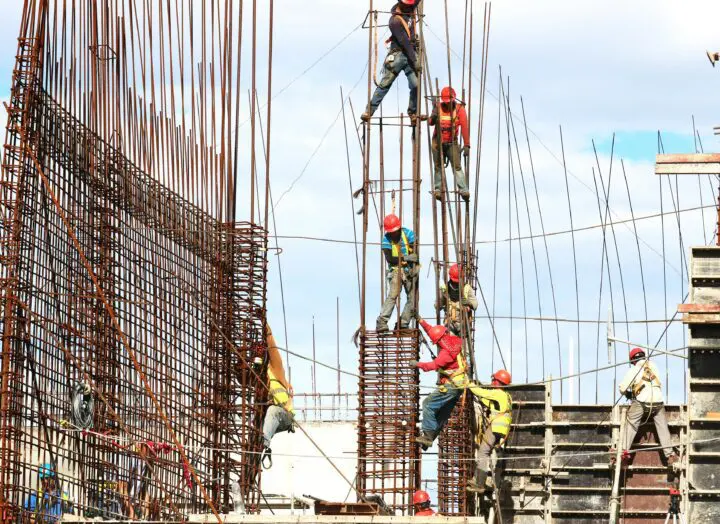Climate Impact on Professional Liability
AIA’s 2021‑2025 Strategic Plan states that the mission of AIA is to “inspire and empower architects to improve society and transform the world.
Text
AIA’s 2021-2025 Strategic Plan states that the mission of AIA is to “inspire and empower architects to improve society and transform the world.” A key tool to enabling architects to fulfill this mission is developing a better understanding of architect’s liability as the world changes around us. And professional liability is evolving due to climate change.
As insurance providers assess claims made, amendments are made to state law and building codes, and legal precedents are set by the courts, professional liability continues to evolve. These actors, as well as an evolving standard of care will greatly influence the designs of the future–which ultimately tie back to the architect’s responsibility to protect the health, safety, and welfare of the public.
AIA and the AIA Trust are developing tools and resources to help AIA members better understand their risks and responsibilities pertaining to climate change. And your input is needed via a very brief survey linked later in this article.
Scalable Climate Action Group
In 2021, the Scalable Climate Action “Group” (SCA) of the AIA Strategic Council, based on the AIA’s climate action strategic priority, researched and identified several fundamental levers of change that the Institute must address in order to create a “snowball effect” so that all practitioners integrate climate action into their work within 10 years. This timing aligns with the important 2030 deadline for global climate mitigation and adaptation goals. The SCA report, including goals and recommendations, can be found here.

Professional Liability is one of those levers of change. It can help drive architects to address future climate and hazards in our design work because of potential accountability for a changing climate.
In an effort to discover where this issue lies in the Institute, SCA reached out to Victor Insurance Managers Inc., one of the largest liability insurers in our industry and the provider of the AIA Trust Professional Liability Insurance program. Both Victor and the AIA Trust are champions of this issue and already cutting a path to the future.
In concert, Victor in October conducted a webinar “Taking the Lead to Address Climate Change” regarding how professional liability may be changing with the release of new climate science and the degree of certainty in which severe weather can be predicted for the next 30 years. This in-depth analysis identifies the critical ways our profession must evolve to meet climate change and stay relevant to our members and in the world. Staying relevant in a changing world is key to why this matters. The webinar and handout can be found on the AIA Trust website.
The webinar touches on many critical ways architects must begin to face the impacts of climate change on their practices. To name a few:
- Focus on the importance & opportunities of design for climate change
- Make the business case for relevant services
- Look at economic & business continuity impacts
- Talk to clients early in the project about potential disruptions, climate hazards, and risks.
The Hazard and Climate Risk Acknowledgment Form
A tool that architects can use to address these issues with clients has been developed by the AIA Resilience and Adaptation Advisory Group (RAd AG). The Hazard and Climate Risk Acknowledgment Form was designed to be used when discussing with clients how present and future hazards could impact a site at the beginning of any project. The intent of the document is three-fold: 1. For architects to document conversations about potential risk with a client, 2. For architects to understand how risk over time may impact the design, retrofit, repair, or adaptation of the building, and 3. For clients to consider the risk/consequences of their decisions as they inform the design of buildings. The Hazard and Climate Risk Acknowledgment Form and User’s Guide may be found here.
A building and its components may be at risk disproportionately over time depending on the hazard or climate risk. This form provides resources and guidance on how to find current and future hazards and climate risks at the project site which may change the site selection and how buildings are designed. For example, a building design might include a mechanical room in a basement on a site which is not in the present-day floodplain. However, during the service life of the building, climate change could cause the floodplain to expand due to more severe and frequent events. The implication of the expanded floodplain means that the site could flood in the future, putting critical building equipment in the basement at risk.
Acknowledging future risk, which is often not contemplated in current regulations and codes, is an important shift in the practice of architecture. States and local authorities will need to develop new rules to address the speed and severity of hazard events. In the interim, architects must utilize emerging tools and stay abreast of current science on climate change projections (sea level rise, temperature changes, storm intensities, etc.).
A client may choose not to address future and unknown risk through design, but the Hazard and Climate Risk Acknowledgement Form is intended to document this decision and assumptions used in the basis of design. This documentation will be essential in mitigating any future liability issues. While this is an important aspect of the form, it is intended more as a discussion prompter to jumpstart a client’s interest in and desire to build a resilient structure that is adaptable to future risks and vulnerabilities.
Your Input Needed!
 The SCA, RAd AG, AIA Trust, and AIA Strategic Council all want to hear from AIA members about this important topic. Please complete a brief 10-question survey by clicking on this link – which shouldn’t take more than 3 minutes to complete.
The SCA, RAd AG, AIA Trust, and AIA Strategic Council all want to hear from AIA members about this important topic. Please complete a brief 10-question survey by clicking on this link – which shouldn’t take more than 3 minutes to complete.
Conclusion
With the recent extreme weather events and clear messages from the scientific community on the certainty of continued climate changes at least through mid-century, it is incumbent on architects to address the consequences of a changing climate in our design work. The professional liability implications are significant.
Related resources:
Referenced in article:
- AIA Climate Change Impact Survey for you to complete
- AIA Scalable Climate Action Group Report
- Victor webinar: “Taking the Lead to Address Climate Change”
- Hazard and Climate Risk Acknowledgement Form and User’s Guide
Additional Resources:
- RAd AG Vulnerability article
- Resilience and Adaptation Certificate AIAU Program
- AIAU “A Regional Tour of Climate Risk for Planning and Design”
- Fourth National Climate Assessment
- Global Climate Talks: Connecting the Dots to Architecture
More on Climate Change & Professional Liability

Professional Liability Insurance Database
Professional Liability
Is Your Firm Eligible for a Premium Credit?
News ▪ January 2009
Straightforward Advice on Preserving Cash Flow
Professional Liability ▪ Retirement & Financial Planning ▪ Article